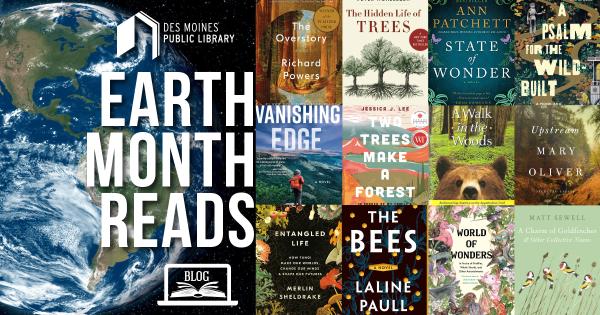
April is Earth Month, a time to celebrate all of the wonders of this amazing planet that we live on. There are thousands of books about the natural world that you could choose to read this month. To help you out, our Book Chat librarians put together a list of fiction and nonfiction books with great nature writing to check out.
All of these books will also fulfill the April Bonus Category for the 2022 DMPL Reading Challenge "A book that takes place outside or is about the natural world. If this is the first time you are hearing about the DMPL Reading Challenge it is never too late to join!
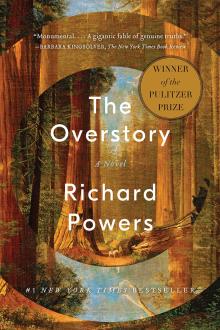
The Overstory by Richard Powers
The Overstory is a book for all readers who despair of humanity's self-imposed separation from the rest of creation and who hope for the transformative, regenerating possibility of a homecoming. If the trees of this earth could speak, what would they tell us? "Listen. There's something you need to hear."
An Air Force loadmaster in the Vietnam War is shot out of the sky, then saved by falling into a banyan. An artist inherits a hundred years of photographic portraits, all of the same doomed American chestnut. A hard-partying undergraduate in the late 1980s electrocutes herself, dies, and is sent back into life by creatures of air and light. A hearing- and speech-impaired scientist discovers that trees are communicating with one another. These four, and five other strangers—each summoned in different ways by trees—are brought together in a last and violent stand to save the continent's few remaining acres of virgin forest.
From the roots to the crown and back to the seeds, The Overstory unfolds in concentric rings of interlocking fables that range from antebellum New York to the late twentieth-century Timber Wars of the Pacific Northwest and beyond, exploring the essential conflict on this planet: the one taking place between humans and nonhumans. There is a world alongside ours--vast, slow, interconnected, resourceful, magnificently inventive, and almost invisible to us. This is the story of a handful of people who learn how to see that world and who are drawn up into its unfolding catastrophe.

A Charm of Goldfinches by Matt Sewell
"Most groups of wildlife can be described as a flock, herd, or shoal—but where is the fun in ending there?"
Whether you're an animal lover or a grammar geek, illustrator Matt Sewell has the perfect menagerie of beasts (and beast-related terms) for your reading pleasure. Along with fifty-five gorgeous color illustrations, Sewell presents the unexpected collective nouns used to describe groups of animals on land, in the air, and in the water. Discover the secret behind a "sleuth of bears," keep your eyes open for a "watch of nightingales," and learn something new about a "school of whales." Illustrated in inimitable watercolor, this book makes a great gift for nature and art lovers everywhere.
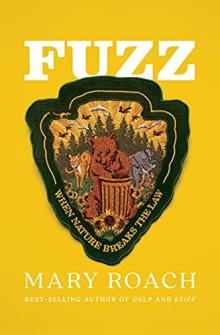
Fuzz: When Nature Breaks the Law by Mary Roach
What's to be done about a jaywalking moose? A bear caught breaking and entering? A murderous tree? Three hundred years ago, animals that broke the law would be assigned legal representation and put on trial. These days, as New York Times best-selling author Mary Roach discovers, the answers are best found not in jurisprudence but in science: the curious science of human-wildlife conflict, a discipline at the crossroads of human behavior and wildlife biology.
Roach tags along with animal-attack forensics investigators, human-elephant conflict specialists, bear managers, and "danger tree" faller blasters. Intrepid as ever, she travels from leopard-terrorized hamlets in the Indian Himalaya to St. Peter's Square in the early hours before the pope arrives for Easter Mass, when vandal gulls swoop in to destroy the elaborate floral display. She taste-tests rat bait, learns how to install a vulture effigy, and gets mugged by a macaque.
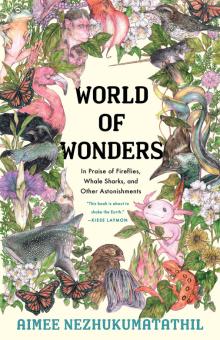
World of Wonders by Aimee Nezhukumatathil
From beloved, award-winning poet Aimee Nezhukumatathil comes a debut work of nonfiction—a collection of essays about the natural world, and the way its inhabitants can teach, support, and inspire us.
As a child, Nezhukumatathil called many places home: the grounds of a Kansas mental institution, where her Filipina mother was a doctor; the open skies and tall mountains of Arizona, where she hiked with her Indian father; and the chillier climes of western New York and Ohio. But no matter where she was transplanted—no matter how awkward the fit or forbidding the landscape—she was able to turn to our world's fierce and funny creatures for guidance.
"What the peacock can do," she tells us, "is remind you of a home you will run away from and run back to all your life." The axolotl teaches us to smile, even in the face of unkindness; the touch-me-not plant shows us how to shake off unwanted advances; the narwhal demonstrates how to survive in hostile environments. Even in the strange and the unlovely, Nezhukumatathil finds beauty and kinship. For it is this way with wonder: it requires that we are curious enough to look past the distractions in order to fully appreciate the world's gifts.
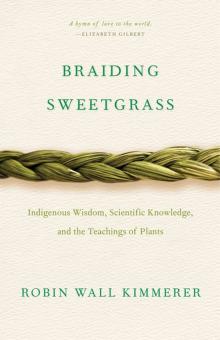
Braiding Sweetgrass by Robin Wall Kimmerer
As a botanist, Robin Wall Kimmerer has been trained to ask questions of nature with the tools of science. As a member of the Citizen Potawatomi Nation, she embraces the notion that plants and animals are our oldest teachers. In Braiding Sweetgrass, Kimmerer brings these two lenses of knowledge together to take us on "a journey that is every bit as mythic as it is scientific, as sacred as it is historical, as clever as it is wise" (Elizabeth Gilbert).
Drawing on her life as an indigenous scientist, and as a woman, Kimmerer shows how other living beings—asters and goldenrod, strawberries and squash, salamanders, algae, and sweetgrass—offer us gifts and lessons, even if we've forgotten how to hear their voices. In reflections that range from the creation of Turtle Island to the forces that threaten its flourishing today, she circles toward a central argument: that the awakening of ecological consciousness requires the acknowledgment and celebration of our reciprocal relationship with the rest of the living world. For only when we can hear the languages of other beings will we be capable of understanding the generosity of the earth, and learn to give our own gifts in return.
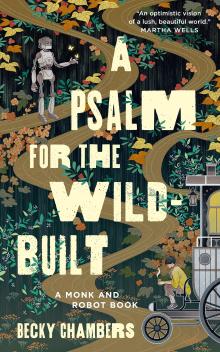
A Psalm for the Wild-Built by Becky Chambers
In A Psalm for the Wild-Built, Hugo Award-winner Becky Chambers's delightful new Monk & Robot series gives us hope for the future. It's been centuries since the robots of Panga gained self-awareness and laid down their tools; centuries since they wandered, en masse, into the wilderness, never to be seen again; centuries since they faded into myth and urban legend.
One day, the life of a tea monk is upended by the arrival of a robot, there to honor the old promise of checking in. The robot cannot go back until the question of "what do people need?" is answered. But the answer to that question depends on who you ask, and how.They're going to need to ask it a lot. Becky Chambers's new series asks: in a world where people have what they want, does having more matter?

Vanishing Edge by Claire Kells
For fans of Christine Carbo and Scott Graham, an ex-FBI agent is on a desperate hunt in the middle of a national park for a party of vanished campers while a killer is on the loose.
The rugged landscape of Sequoia National Park is a challenge on the best of days-but when a park ranger discovers an abandoned exclusive campsite with an empty tent and high-end technical gear scattered on the shores of an alpine lake, the wilderness takes on a sinister new hue.
Thirty-two-year-old Felicity Harland-a former FBI agent who left the service in the wake of a personal tragedy and has taken her skills off the grid-is brought in as chief investigator. As a federal agent with the Investigative Services Bureau, she tackles crimes that occur on National Parks lands- unexplained falls, domestic disputes, and now a possible murder case.
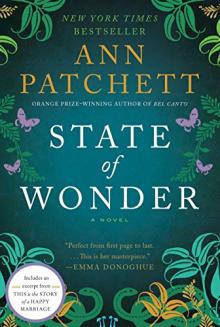
State of Wonder by Ann Patchett
Marina Singh is a research scientist at Vogel, a pharmaceutical institute in Minnesota, and inconveniently in love with her boss, Mr. Fox. When one of her colleagues is reported to have died while following up on the progress of a field team based in Brazil, Marina is dispatched by Mr. Fox to the Amazon to uncover the truth of his death. And his widow wants his effects. She travels to Manaus, then down into the Amazonian delta, deep into the dense, dark, insect-infested jungle.
In a novel that is packed with amazing twists and surprises, Ann Patchett returns with immense confidence to a broad canvas, teeming with atmosphere and characters and rich with narrative. Remarkable events--fights with anacondas; encounters with cannibals; deaths; re-births--and profound moral decisions come together in a novel that will enthrall her many readers and fans and is guaranteed to be a major bestseller.
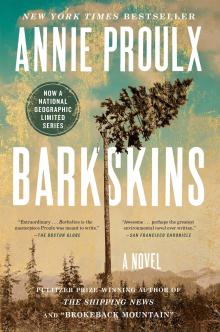
Barkskins by Annie Proulx
In the late seventeenth century two penniless young Frenchmen, René Sel and Charles Duquet, arrive in New France. Bound to a feudal lord, a "seigneur," for three years in exchange for land, they become wood-cutters—barkskins. René suffers extraordinary hardship, oppressed by the forest he is charged with clearing.
He is forced to marry a Mi'kmaw woman and their descendants live trapped between two inimical cultures. But Duquet, crafty and ruthless, runs away from the seigneur, becomes a fur trader, then sets up a timber business. Proulx tells the stories of the descendants of Sel and Duquet over three hundred years—their travels across North America, to Europe, China, and New Zealand, under stunningly brutal conditions--the revenge of rivals, accidents, pestilence, Indian attacks, and cultural annihilation. Over and over again, they seize what they can of a presumed infinite resource, leaving the modern-day characters face to face with possible ecological collapse.
Proulx's inimitable genius is her creation of characters who are so vivid—in their greed, lust, vengefulness, or their simple compassion and hope—that we follow them with fierce attention. Annie Proulx is one of the most formidable and compelling American writers, and Barkskins is her greatest novel, a magnificent marriage of history and imagination.
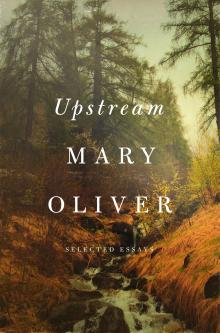
Upstream by Mary Oliver
"In the beginning I was so young and such a stranger to myself I hardly existed. I had to go out into the world and see it and hear it and react to it, before I knew at all who I was, what I was, what I wanted to be."
So begins Upstream, a collection of essays in which revered poet Mary Oliver reflects on her willingness, as a young child and as an adult, to lose herself within the beauty and mysteries of both the natural world and the world of literature. Emphasizing the significance of her childhood "friend" Walt Whitman, through whose work she first understood that a poem is a temple, "a place to enter, and in which to feel," and who encouraged her to vanish into the world of her writing, Oliver meditates on the forces that allowed her to create a life for herself out of work and love. As she writes, "I could not be a poet without the natural world. Someone else could. But not me. For me the door to the woods is the door to the temple."
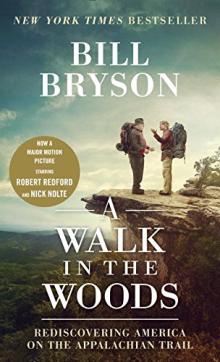
A Walk in the Woods by Bill Bryson
"Not long after I moved with my family to a small town in New Hampshire, I happened upon a path that vanished into a wood on the edge of town."
So begins Bill Bryson's hilarious book A Walk in the Woods. Following his return to America after twenty years in Britain, Bryson decided to reacquaint himself with his native country by walking the 2,100-mile Appalachian Trail, which stretches from Springer Mountain in Georgia to Mount Katahdin in Maine. The AT, as it's affectionately known to thousands of hikers, offers an astonishing landscape of silent forests and sparkling lakes--and to a writer with the comic genius of Bill Bryson, it also provides endless opportunities to test his own powers of ineptitude, and to witness the majestic silliness of his fellow human beings.
But A Walk in the Woods is more than just a laugh-out-loud hike. Bryson's acute eye is a wise witness to this fragile and beautiful trail, and as he tells its fascinating history, he makes a moving plea for the conservation of America's last great wilderness. An adventure, a comedy, a lament, and a celebration, A Walk in the Woods is destined to become a modern classic of travel literature.
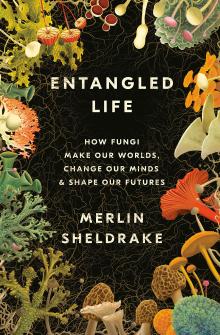
Entangled Life by Merlin Sheldrake
A mind-bending journey into the hidden universe of fungi, "one of those rare books that can truly change the way you see the world around you"—Helen Macdonald, author of H Is for Hawk.
When we think of fungi, we likely think of mushrooms. But mushrooms are only fruiting bodies, analogous to apples on a tree. Most fungi live out of sight, yet make up a massively diverse kingdom of organisms that supports and sustains nearly all living systems. Fungi provide a key to understanding the planet on which we live, and the ways we think, feel, and behave.
In Entangled Life, the brilliant young biologist Merlin Sheldrake shows us the world from a fungal point of view, providing an exhilarating change of perspective. Sheldrake's vivid exploration takes us from yeast to psychedelics, to the fungi that range for miles underground and are the largest organisms on the planet, to those that link plants together in complex networks known as the "Wood Wide Web," to those that infiltrate and manipulate insect bodies with devastating precision.
Fungi throw our concepts of individuality and even intelligence into question. They are metabolic masters, earth makers, and key players in most of life's processes. They can change our minds, heal our bodies, and even help us remediate environmental disaster. By examining fungi on their own terms, Sheldrake reveals how these extraordinary organisms--and our relationships with them--are changing our understanding of how life works.
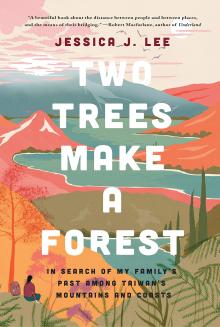
Two Trees Make a Forest by Jessica J. Lee
A chance discovery of letters written by her immigrant grandfather leads Jessica J. Lee to her ancestral homeland, Taiwan. There, she seeks his story while growing closer to the land he knew.
Lee hikes mountains home to Formosan flamecrests, birds found nowhere else on earth, and swims in a lake of drowned cedars. She bikes flatlands where spoonbills alight by fish farms, and learns about a tree whose fruit can float in the ocean for years, awaiting landfall. Throughout, Lee unearths surprising parallels between the natural and human stories that have shaped her family and their beloved island. Joyously attentive to the natural world, Lee also turns a critical gaze upon colonialist explorers who mapped the land and named plants, relying on and often effacing the labor and knowledge of local communities.
Two Trees Make a Forest is a genre-shattering book encompassing history, travel, nature, and memoir, an extraordinary narrative showing how geographical forces are interlaced with our family stories.
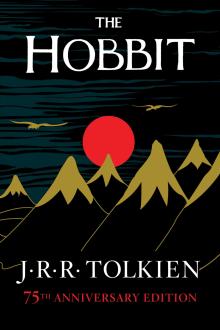
The Hobbit by J.R.R. Tolkien
A great modern classic and the prelude to The Lord of the Rings. Bilbo Baggins is a hobbit who enjoys a comfortable, unambitious life, rarely traveling any farther than his pantry or cellar. But his contentment is disturbed when the wizard Gandalf and a company of dwarves arrive on his doorstep one day to whisk him away on an adventure. They have launched a plot to raid the treasure hoard guarded by Smaug the Magnificent, a large and very dangerous dragon. Bilbo reluctantly joins their quest, unaware that on his journey to the Lonely Mountain he will encounter both a magic ring and a frightening creature known as Gollum.
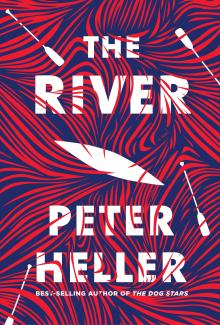
The River by Peter Heller
Wynn and Jack have been best friends since college orientation, bonded by their shared love of mountains, books, and fishing. Wynn is a gentle giant, a Vermont kid never happier than when his feet are in the water. Jack is more rugged, raised on a ranch in Colorado where sleeping under the stars and cooking on a fire came as naturally to him as breathing. When they decide to canoe the Maskwa River in northern Canada, they anticipate long days of leisurely paddling and picking blueberries, and nights of stargazing and reading paperback Westerns. But a wildfire making its way across the forest adds unexpected urgency to the journey.
One night, with the fire advancing, they hear a man and woman arguing on the fog-shrouded riverbank; the next day, a man appears on the river, paddling alone. Is this the same man they heard? And if he is, where is the woman? From this charged beginning, master storyteller Peter Heller unspools a headlong, heart-pounding story of desperate wilderness survival.
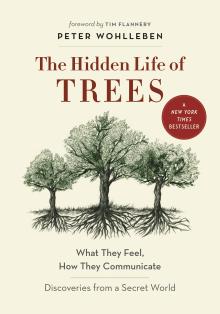
The Hidden Life of Trees by Peter Wohlleben
In The Hidden Life of Trees, Peter Wohlleben shares his deep love of woods and forests and explains the amazing processes of life, death, and regeneration he has observed in the woodland and the amazing scientific processes behind the wonders of which we are blissfully unaware. Much like human families, tree parents live together with their children, communicate with them, and support them as they grow, sharing nutrients with those who are sick or struggling and creating an ecosystem that mitigates the impact of extremes of heat and cold for the whole group. As a result of such interactions, trees in a family or community are protected and can live to be very old. In contrast, solitary trees, like street kids, have a tough time of it and in most cases die much earlier than those in a group.
Drawing on groundbreaking new discoveries, Wohlleben presents the science behind the secret and previously unknown life of trees and their communication abilities; he describes how these discoveries have informed his own practices in the forest around him. As he says, a happy forest is a healthy forest, and he believes that eco-friendly practices not only are economically sustainable but also benefit the health of our planet and the mental and physical health of all who live on Earth.
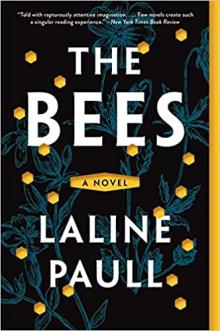
The Bees by Laline Paull
The Handmaid's Tale meets The Hunger Games in this brilliantly imagined debut set in an ancient culture where only the queen may breed and deformity means death.
Flora 717 is a sanitation worker, a member of the lowest caste in her orchard hive where work and sacrifice are the highest virtues and worship of the beloved Queen the only religion. But Flora is not like other bees. With circumstances threatening the hive's survival, her curiosity is regarded as a dangerous flaw but her courage and strength are an asset. She is allowed to feed the newborns in the royal nursery and then to become a forager, flying alone and free to collect pollen. She also finds her way into the Queen's inner sanctum, where she discovers mysteries about the hive that are both profound and ominous.
But when Flora breaks the most sacred law of all--daring to challenge the Queen's fertility—enemies abound, from the fearsome fertility police who enforce the strict social hierarchy to the high priestesses jealously wedded to power. Her deepest instincts to serve and sacrifice are now overshadowed by an even deeper desire, a fierce maternal love that will bring her into conflict with her conscience, her heart, her society—and lead her to unthinkable deeds.
Thrilling, suspenseful and spectacularly imaginative, The Bees gives us a dazzling young heroine and will change forever the way you look at the world outside your window.
Last Modified December 15, 2025